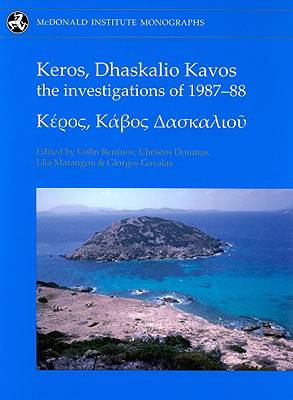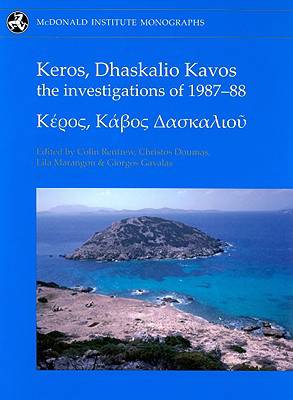
- Afhalen na 1 uur in een winkel met voorraad
- Gratis thuislevering in België vanaf € 30
- Ruim aanbod met 7 miljoen producten
- Afhalen na 1 uur in een winkel met voorraad
- Gratis thuislevering in België vanaf € 30
- Ruim aanbod met 7 miljoen producten
Zoeken
Keros, Dhaskalio Kavos
The Investigations of 1987-88
A Colin Renfrew, Giorgos Gavalas, Christos Doumas, Lila I Marangou, Giorgios Gavalas
€ 96,45
+ 192 punten
Omschrijving
The site of Dhaskalio Kavos, on the remote Cycladic island of Keros, was extensively looted in the late 1950s and early 1960s. Investigations starting in1963 then revealed large quantities of fractured marble bowls, broken marble figures and smashed pottery of the Early Cycladic period from around 2500 BC. This report of the subsequent survey and rescue excavations of 1987-88 reveals the extraordinary richness of the site, now confirmed as one of the most prolific in Èlite goods of the entire Aegean early bronze age. Was it an unprecedentedly rich Early Cycladic cemetery, recently wrecked by looters? Or was the damage deliberately produced during early bronze age times in some procedure of ritual breakage and ceremonial deposition? Here the survey of the site and the rescue excavations undertaken within the looted area are documented in detail, with a full account of the finds. Alternative explanations for this extraordinary deposit are explored. What has been termed 'the Keros Enigma', in the light of the finds at the site, can now be reconsidered with the full documentation which this volume offers.
Specificaties
Betrokkenen
- Auteur(s):
- Uitgeverij:
Inhoud
- Aantal bladzijden:
- 475
- Taal:
- Engels
- Reeks:
Eigenschappen
- Productcode (EAN):
- 9781902937434
- Verschijningsdatum:
- 6/12/2007
- Uitvoering:
- Hardcover
- Formaat:
- Genaaid
- Afmetingen:
- 217 mm x 278 mm
- Gewicht:
- 2013 g

Alleen bij Standaard Boekhandel
+ 192 punten op je klantenkaart van Standaard Boekhandel
Beoordelingen
We publiceren alleen reviews die voldoen aan de voorwaarden voor reviews. Bekijk onze voorwaarden voor reviews.











